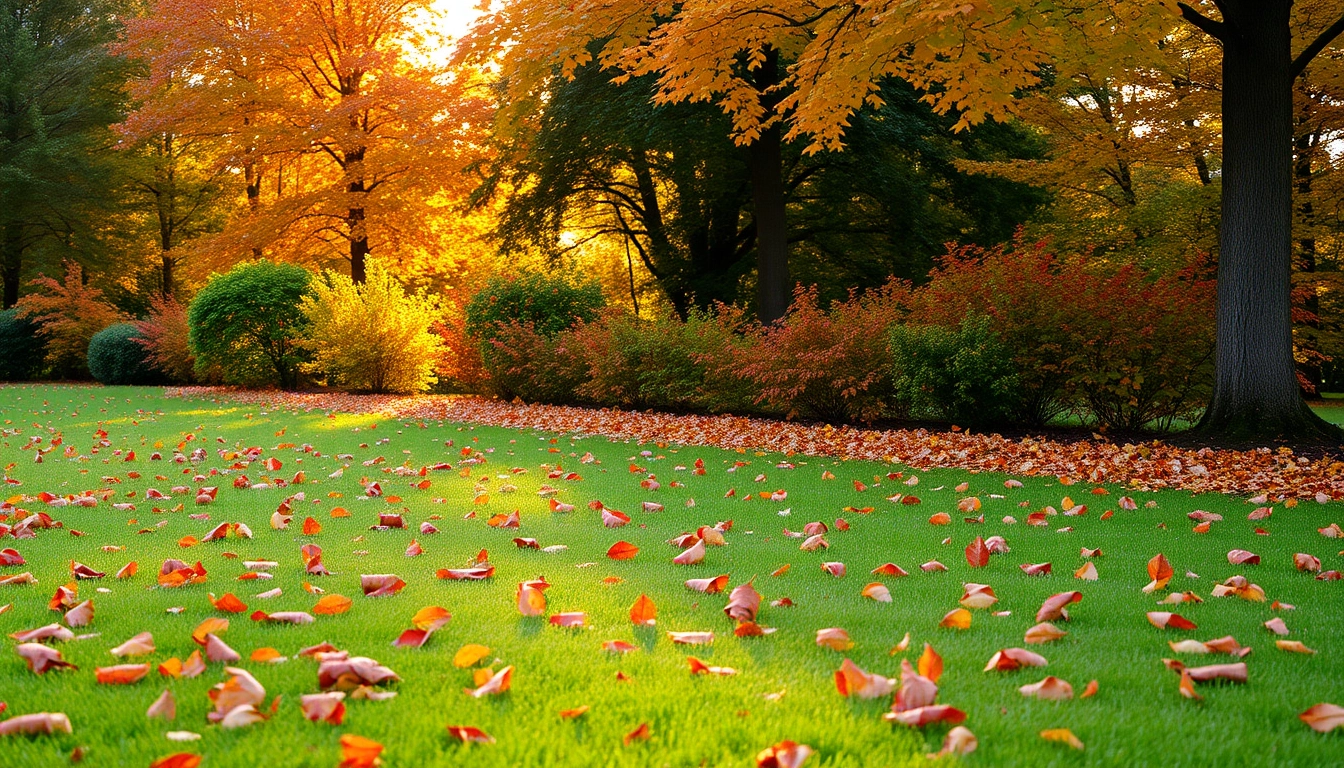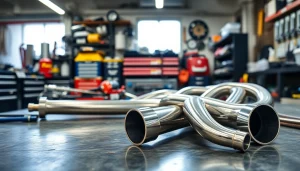Fall Clean Up: Essential Services for a Pristine Autumn Yard

Understanding Fall Clean Up
What is Fall Clean Up?
Fall clean up is an essential seasonal practice for maintaining a healthy and aesthetically pleasing yard as the weather transitions to colder temperatures. It involves a series of tasks designed to prepare your lawn and garden for winter and ensure it returns to its prime in the spring. This process typically includes leaf removal, trimming back perennials, cleaning up garden beds, and general debris removal. By investing time and effort into fall clean up, homeowners can prevent potential issues such as mold growth and maintain the overall health of their landscapes.
Benefits of Seasonal Lawn Maintenance
Regular fall maintenance provides numerous benefits:
- Healthier Lawn: Cleaning up fallen leaves and debris prevents the creation of mold and encourages a healthier grass growth.
- Improved Aesthetics: A tidy yard enhances curb appeal and creates a welcoming environment.
- Pest Control: Removing decaying organic matter can help reduce the population of pests that might otherwise overwinter in your yard.
- Soil Preparation: Preparing your soil for winter promotes nutrient retention and can improve your lawn’s resilience against harsh weather.
Common Tasks in Fall Clean Up
The tasks involved in fall clean up can vary based on the landscape but typically include:
- Leaf Removal: Regular removal of leaves prevents mold and helps keep the lawn healthy.
- Trimming Plants: Cutting back overgrown shrubs and perennials enhances growth in spring.
- Weeding: Removing perennial weeds before winter minimizes their growth come spring.
- Mulching: Applying fresh mulch to garden beds conserves moisture and insulates plants.
- Cleaning Up Debris: Collecting trash, branches, and other debris not only improves appearance but also prevents pests from nesting.
Planning Your Fall Clean Up
When to Start Your Fall Clean Up?
The best time to begin your fall clean up typically falls between mid-September and late October. As the leaves begin to change color and fall, it’s important to stay ahead of the leaves piling up. Early action not only makes the clean up process more manageable but also ensures that your lawn and plants are ready for winter.
Creating a Fall Clean Up Checklist
To streamline your fall clean up, consider creating a checklist. A comprehensive checklist can include:
- Remove leaves from the lawn and gutters.
- Trim shrubs and perennials to about 6-12 inches above the ground.
- Weed garden beds and apply mulch as needed.
- Rake and dispose of debris, including branches and trash.
- Perform a final mow of the lawn, lowering the blade slightly.
- Check garden tools for maintenance and storage.
Choosing the Right Service Provider
If hiring a professional service, it’s crucial to choose a reputable provider. Look for companies with good reviews, an established service history, and clear service offerings. Always ask about their fall clean up procedures and ensure they are equipped for the specific tasks you require. It’s worth taking the time to compare a few options to ensure you get the best value for your investment.
DIY vs. Professional Fall Clean Up
Advantages of Hiring Professionals
While DIY clean up can be rewarding, hiring professionals has several advantages:
- Expertise: Professionals bring knowledge and experience, ensuring that all tasks are done correctly and effectively.
- Time-Saving: Hiring a service frees up your time for other activities, particularly as the holiday season approaches.
- Tool Access: Professionals have access to specialized equipment that can perform tasks more efficiently than standard residential tools.
- Safety: Landscaping can involve physical labor that may lead to injury without proper training; professionals are trained to handle these tasks safely.
Basic DIY Techniques for Fall Clean Up
If you choose the DIY path, there are effective techniques to make your fall clean up easier:
- Use a mulching mower or a leaf blower to simplify leaf removal.
- Consider sectioning your lawn into smaller areas to avoid feeling overwhelmed.
- Incorporate breaks to avoid fatigue; fall clean up can be more labor-intensive than expected.
- Ask family or friends to help—turning clean up into a collaborative effort makes the process more enjoyable.
Comparing Costs: DIY vs. Professional Services
The cost comparison between DIY cleaning and hiring professionals can vary widely based on location, yard size, and specific tasks. On average, hiring professionals might range from $200 to $500 depending on the complexity and size of your yard. DIY costs may only include tools and equipment, so it could be as low as $50 if you already have the necessary equipment. Ultimately, the choice hinges on your budget, time, and expertise.
Tips for Effective Fall Clean Up
Best Practices for Leaf Removal
Effective leaf removal is crucial for a successful fall clean up. Here are some best practices:
- Start raking early in the fall when leaves are dry for easier collection.
- Use a leaf blower or vacuum for a quicker option.
- Consider composting leaves if they are disease-free to enrich your soil later.
- Don’t forget to check hidden areas, such as under bushes or behind fences, where leaves might accumulate.
Tools and Equipment You Might Need
When embarking on your fall clean up, the right tools can significantly ease the process. Essential tools include:
- Rake: A sturdy rake is necessary for collecting leaves and debris.
- Leaf Blower: This can save time and reduce physical strain.
- Pruning Shears: For trimming plants and shrubs.
- Tarps or Buckets: Use them to collect and transport leaves and debris efficiently.
- Mulching Mower: This can help shred leaves for composting or mulching.
How to Prepare Your Lawn for Winter
Proper preparation of your lawn before winter is vital for its overall health. This includes:
- Final mowing to about 2-3 inches to prevent matting of the grass.
- Last-minute fertilization with a winterizer to strengthen the roots.
- Overseeding as needed for a fuller lawn in spring.
- Caring for any hardscaping by ensuring drains and pathways are clear of debris.
Post-Clean Up Care and Maintenance
Essential Lawn Care Services After Clean Up
After completing your fall clean up tasks, consider ongoing maintenance for the winter months, including:
- Applying a winter fertilizer to keep roots nourished.
- Continuously monitoring for pests or diseases during warmer winter spells.
- Covering sensitive plants with mulch or protective barriers to limit frost damage.
Monitoring Your Lawn Health Over Winter
Even in winter, it’s essential to periodically check the lawn’s health. Look for any signs of mold or rot, and ensure that snow cover remains consistent to protect the grass. Proper monitoring prevents lasting damage and ensures a quicker recovery come spring.
Preparing for Spring Growth
As winter fades, preparing for spring growth is key. Begin planning for spring projects, such as reseeding or fertilizing, during late winter, ensuring your lawn is poised for robust recovery. Engaging in early preparations can lead to a lush, vibrant lawn ahead of the growing season.







